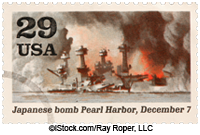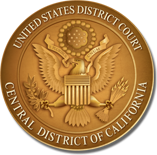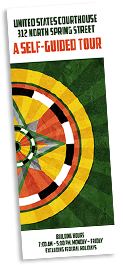The 1940s
The 1940s were defined by World War II, the Holocaust, atomic bombs, and the beginning of the Cold War. Women were needed in the workforce to replace men who went to war, and wartime production pulled the U.S. out of the Great Depression. Upon their return, the GI Bill entitled soldiers to a college education. The U. S. emerged from the war as a world superpower, challenged only by the Soviet Union.
In 1937, James M. Cain, author of The Postman Always Rings Twice, wrote a novel titled Serenade that was copyrighted later that year. Serenade had a scene of a couple taking refuge from a storm in a church. In 1939, Universal Pictures released a movie titled When Tomorrow Comes, which depicted a scene similar to the one in Serenade. In a case heard at the Los Angeles federal courthouse, Cain sued Universal, the scriptwriter, and the director for copyright infringement, claiming that the church scene in his book had been copied in the scene depicting the same situation in the film. In 1942, U.S. District Judge Leon Yankwich ruled that there was no resemblance between the scenes in the book and the movie other than “scènes à faire,” or natural similarities due to a common situation, thus establishing legal precedent by being the first judge to apply this concept to a copyright case.
 The Federal Communications Commission also made an appearance in the Los Angeles federal building on May 21, 1946, when a hearing was held in Room 324 about the future of television programming. Witnesses included seven applicants who had applied for television permits, including Earle C. Anthony, founder of KFI-TV, one of Los Angeles’ earliest television stations. The discussion included types of planned programming such as household gadget and children’s shows and how-to demonstrations for farmers.
The Federal Communications Commission also made an appearance in the Los Angeles federal building on May 21, 1946, when a hearing was held in Room 324 about the future of television programming. Witnesses included seven applicants who had applied for television permits, including Earle C. Anthony, founder of KFI-TV, one of Los Angeles’ earliest television stations. The discussion included types of planned programming such as household gadget and children’s shows and how-to demonstrations for farmers.
Two years earlier in 1944, Charlie Chaplin appeared at the courthouse after he was arrested for violating the Mann Act of 1909. The Mann Act made it a crime to transport women across state lines “for the purpose of prostitution or debauchery, or for any immoral purpose.” In 1941, Chaplin signed actress Joan Barry to a film contract and she eventually became his mistress. When Chaplin let Barry’s contract expire, he purchased her train ticket to New York, triggering his arrest and indictment. It is possible that the case might have been instigated by J. Edgar Hoover, the Director of the FBI, due to Chaplin’s political views. U.S. District Judge F.T. O’Connor heard the case at the Los Angeles federal courthouse.
 As the United States entered into the Cold War, the House Un-American Activities Committee held hearings in the Los Angeles federal building during October 1947 against ten screenwriters, directors, entertainers, and producers known as the “Hollywood Ten.” These members, including screenwriter Lester Cole, refused to state whether they were members of the Communist Party and were eventually charged with contempt of Congress. After the Hollywood Ten surrendered to the U.S. Marshal, fifty motion picture agencies blacklisted known Communists, declaring them a disservice to the industry. Cole’s employer, Loew’s Inc., terminated Cole for violating the standard Hollywood contract “morals clause.” Cole, in return, sued Loew’s. U.S. District Judge Leon Yankwich presided over the case and the jury sided with the screenwriter, but the decision was later reversed when the Ninth Circuit upheld Cole’s termination.
As the United States entered into the Cold War, the House Un-American Activities Committee held hearings in the Los Angeles federal building during October 1947 against ten screenwriters, directors, entertainers, and producers known as the “Hollywood Ten.” These members, including screenwriter Lester Cole, refused to state whether they were members of the Communist Party and were eventually charged with contempt of Congress. After the Hollywood Ten surrendered to the U.S. Marshal, fifty motion picture agencies blacklisted known Communists, declaring them a disservice to the industry. Cole’s employer, Loew’s Inc., terminated Cole for violating the standard Hollywood contract “morals clause.” Cole, in return, sued Loew’s. U.S. District Judge Leon Yankwich presided over the case and the jury sided with the screenwriter, but the decision was later reversed when the Ninth Circuit upheld Cole’s termination.
Outside of Hollywood, the United States found itself in the midst of World War II. The draft was established to increase the size of the army so the United States could join the fight. However, not everyone who was conscripted went peacefully. Several cases of these conscientious objectors were heard in federal courts. In a 1946 Southern District of California case, U.S. v. Atherton, charges were brought against men who staged a sit-in while assigned to the Glendora Civilian Service Program work camp, protesting what they deemed slave labor. The men were assigned to the work camp as an alternative to joining the Army. Sitting by designation, U.S. District Judge Charles C. Cavanah from the District of Idaho issued various sentences, but released all of the men to serve two years of probation, some under parental supervision. The “Break Conscription Committee” also protested the draft by mailing their draft cards to President Truman at a mailbox in front of the federal courthouse in Los Angeles.
 The United States involvement in World War II began with the Japanese bombing of Pearl Harbor on December 7, 1941, which started a chain of events that displaced over 100,000 Japanese Americans from their homes and businesses. On May 3, 1942, Japanese Americans and “enemy aliens” within a roughly one hundred mile-wide strip running down the West Coast were given twenty-six days to settle affairs and relocate outside the exclusion zone. Those remaining within the area after the deadline were relocated under military order to internment camps. These groups were placed under strict restrictions that prohibited them from traveling more than five miles from their homes without a permit. Travel permit applications could be obtained and submitted at the Los Angeles federal building.
The United States involvement in World War II began with the Japanese bombing of Pearl Harbor on December 7, 1941, which started a chain of events that displaced over 100,000 Japanese Americans from their homes and businesses. On May 3, 1942, Japanese Americans and “enemy aliens” within a roughly one hundred mile-wide strip running down the West Coast were given twenty-six days to settle affairs and relocate outside the exclusion zone. Those remaining within the area after the deadline were relocated under military order to internment camps. These groups were placed under strict restrictions that prohibited them from traveling more than five miles from their homes without a permit. Travel permit applications could be obtained and submitted at the Los Angeles federal building.
In September 1948, Tomoya Kawakita was convicted by a federal jury on charges of treason, and U.S. District Judge William C. Mathes sentenced him to death. The 27-year-old Californian was visiting Japan when he was caught by the outbreak of World War II. He became an interpreter at a Japanese prisoner of war camp in Oeyama. Survivors of Bataan and Corregidor testified to the indignities and brutal punishments they suffered at the delight of Kawakita. In pronouncing his sentence, Judge Mathes declared that Kawakita’s “life, if spared, would not be worth living.” Kawakita’s death sentence, however, was commuted to life in prison by President Eisenhower. Later, President Kennedy stripped him of U.S. citizenship and deported him to Japan.
 The landmark case of the 1940s at the Los Angeles courthouse came in 1946. Initially in 1945, Gonzalo Mendez, Thomas Estrada, William Guzman, Frank Palomino, and Lorenzo Ramirez filed suit in Los Angeles federal court against four school districts for excluding Mexican children from Anglo schools. The Mendez children were sent to Hoover, a two-room wooden structure in the middle of the city’s Mexican neighborhood. U.S. District Judge Paul J. McCormick ruled in Mendez et al. v. Westminster School District that the segregation of Mexican Americans in public schools was a violation of state law and unconstitutional under the Equal Protection Clause. The Mendez case predated Brown v. Board of Education (1954) and was among the first to deal with segregation in schools.
The landmark case of the 1940s at the Los Angeles courthouse came in 1946. Initially in 1945, Gonzalo Mendez, Thomas Estrada, William Guzman, Frank Palomino, and Lorenzo Ramirez filed suit in Los Angeles federal court against four school districts for excluding Mexican children from Anglo schools. The Mendez children were sent to Hoover, a two-room wooden structure in the middle of the city’s Mexican neighborhood. U.S. District Judge Paul J. McCormick ruled in Mendez et al. v. Westminster School District that the segregation of Mexican Americans in public schools was a violation of state law and unconstitutional under the Equal Protection Clause. The Mendez case predated Brown v. Board of Education (1954) and was among the first to deal with segregation in schools.
 Following the conclusion of World War II, the United States found itself fighting Communism in the Cold War. On October 25, 1948, U.S. District Judge Pierson M. Hall ordered ten grand jury witnesses jailed for contempt of the court after they refused to answer questions about their knowledge of Communist leaders and the Communist organization of Southern California. Demonstrators marched in front of the Los Angeles Federal Building, protesting the “loyalty oath” arrests. The witnesses were later ordered released by U.S. Circuit Judge William Denman, pending an appeal of the contempt ruling. However, upon their release, they were served with subpoenas to reappear before the grand jury.
Following the conclusion of World War II, the United States found itself fighting Communism in the Cold War. On October 25, 1948, U.S. District Judge Pierson M. Hall ordered ten grand jury witnesses jailed for contempt of the court after they refused to answer questions about their knowledge of Communist leaders and the Communist organization of Southern California. Demonstrators marched in front of the Los Angeles Federal Building, protesting the “loyalty oath” arrests. The witnesses were later ordered released by U.S. Circuit Judge William Denman, pending an appeal of the contempt ruling. However, upon their release, they were served with subpoenas to reappear before the grand jury.

